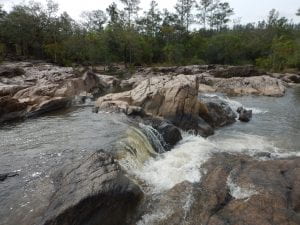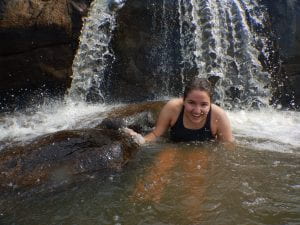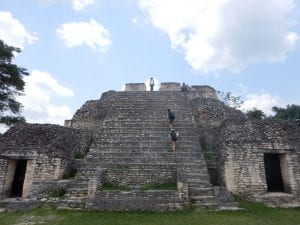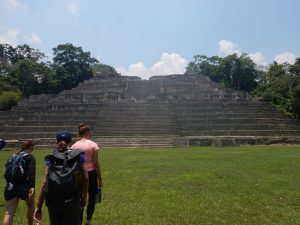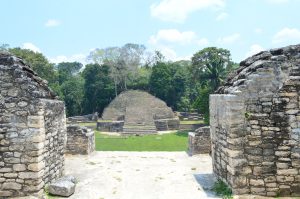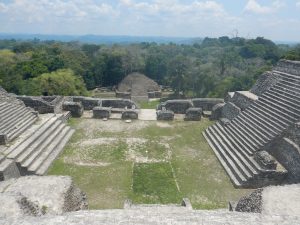It’s day 2 on Glover’s and our first day in the water! We had a super early (in my opinion) start, everyone woke up around 6:30 and we all geared up and headed to breakfast at 7. After some delicious banana pancakes we got into the water for the first time and went to a patch reef a little ways off. It was a pretty calm swim through a lot of sea grass and then before we knew it we were at the reef! It was incredible and I wish I had photos to add here but I didn’t bring my camera on the first swim, hopefully someone else here will have photos for you to see! We saw so many corals and fish, and such a wide variety of organisms all over the place. Everywhere you looked there was something new to see. We even saw a small lionfish sitting on the reef, which is not ideal for invasive reef species control, but still interesting to see one out in the wild in real life! The first swim was a good one for my taxon group, crustaceans; we saw a Caribbean spiny lobster hiding in a hole underneath some coral, another organism I have been hoping to see in real life. After about an hour in the water we went out for a break and some land prep for tomorrow before lunch. Around this time I was outside with the two kids who had collected a bunch of crabs in coconut shells. They showed me one smaller crab and despite their warnings that he was (understandably) angry, I tried to pick it up to get a better look. Alas, the crab outsmarted me and got a good chunk of my finger in his claw, luckily it didn’t draw blood, just a long scrape and my hurt pride. Clearly my crab catching skills are a little rusty, but there are plenty of other crabs around that are hopefully a little friendlier.
We went back in the water after lunch, but not before a quick jog through the mangroves of death. While dramatic sounding, it’s pretty much a trail through the island that goes along the mangroves, and is absolutely filled with mosquitos, it felt like they were completely covering us until we all sprinted into the water and hid under the surface for them to go away. Once we got through that we shuffled our way through a bunch of sea grass until we got to a sandy area with lots of patch reefs, and we went swimming through looking for behaviors and organisms as part of a scavenger hunt. This area was less protected by the island from waves so we were pushed from side to side and through the reef and pulled around. My handwriting is already terrible, but with the waves pushing my arms and clipboard around I don’t think any of my notes are legible. Unfortunately these waves also pushed me up against the coral, and soon after I swam further away I realized that the part of my hand that had gotten smacked into the coral was turning red, and felt a little like it was burning. I discovered that I had the misfortune of bumping into a fire coral, named that probably because it hurts when you touch it. Coral: 1 Liliana: 0
However at the end of the day we went through our first round of taxon presentations and lectures, and by then my finger didn’t hurt from the crab and my hand wasn’t burning from the coral, and despite all the bug bites, I can’t wait to do it again tomorrow!

